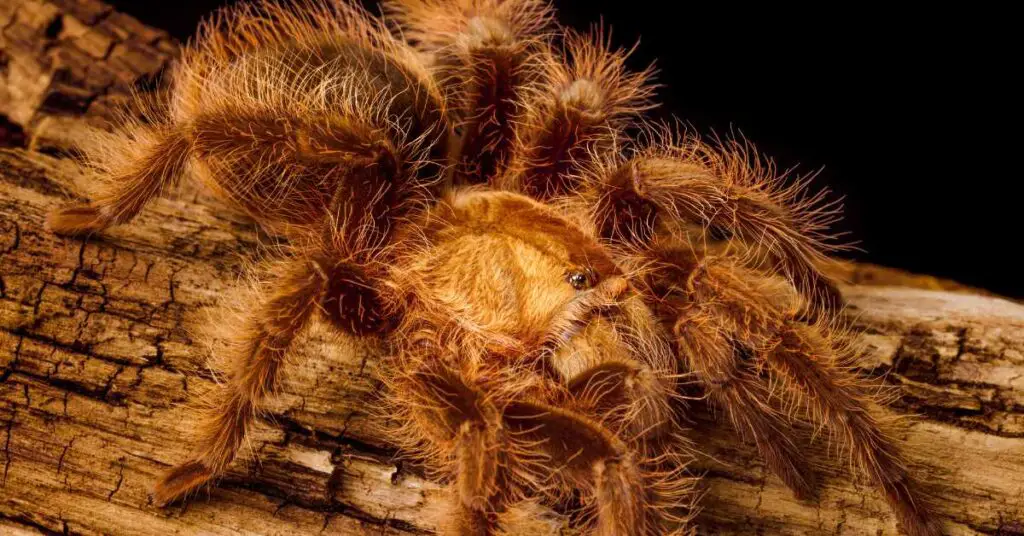As you gaze into the frost-covered landscape outside your window, your mind drifts to the creatures that inhabit this wintry world. One question lingers in your thoughts: do tarantulas, those eight-legged arachnids known for their formidable presence, hibernate?
The answer may surprise you. While these creatures may seem impervious to the cold, there are intriguing behaviors and adaptations that suggest a hidden side to their existence. So, let’s unravel the mystery together and explore the fascinating world of tarantula hibernation.
Key Takeaways
- Tarantulas enter a state of hibernation known as ‘torpor’ during winter to conserve energy and survive harsh environmental conditions.
- During hibernation, tarantulas slow down their bodily functions, including heart rate and breathing, and can survive for several months without eating or drinking.
- Factors such as temperature and habitat play a crucial role in tarantula hibernation patterns, and providing a stable and moderate temperature is essential for their well-being.
- Proper care during hibernation, including creating a suitable hibernation environment and avoiding disturbances, ensures the well-being and survival of tarantulas.
Tarantula Behavior During Winter
During the winter months, tarantulas enter a state of hibernation known as ‘torpor,’ where their metabolic activities significantly decrease to conserve energy. Tarantula hibernation patterns are fascinating and crucial for their survival in harsh conditions. As the temperature drops, tarantulas seek out sheltered areas such as burrows or rock crevices, where they create a cozy nest using silk and debris. This nest provides insulation against the cold and helps regulate humidity levels.
Tarantulas slow down their bodily functions during hibernation. Their heart rate decreases, and they breathe at a much slower rate. This reduced metabolic activity allows them to conserve energy and survive for several months without eating or drinking. In fact, tarantulas can go without food for up to a year!
While in torpor, tarantulas aren’t completely dormant. They may occasionally wake up to move or adjust their position. This helps prevent muscle atrophy and ensures proper blood circulation. Tarantula hibernation survival also relies on their ability to withstand low temperatures. These resilient creatures have adapted to endure freezing conditions by producing antifreeze-like substances in their body fluids, which prevents ice crystal formation and potential cell damage.
Understanding tarantula hibernation patterns and their survival mechanisms is essential for their conservation and well-being. By respecting their natural behavior and providing suitable habitats, we can ensure the continued existence of these remarkable creatures in our ecosystem.

Signs of Tarantula Dormancy
Tarantula dormancy can be identified by various observable signs that indicate a decrease in their metabolic activity and a transition into a state of torpor. Understanding these signs is essential for tarantula owners who want to provide the best care for their furry friends during this period.
Here are four key signs to look out for:
- Reduced activity: Tarantulas in dormancy will exhibit a significant decrease in movement. They may spend most of their time in one spot, hardly venturing out.
- Loss of appetite: During dormancy, tarantulas will often stop eating altogether. This is a natural adaptation to conserve energy and reduce metabolic demands.
- Darkened coloration: Tarantulas may become darker in color during dormancy. This change is believed to be a result of decreased metabolic activity.
- Slowed breathing: A tarantula’s breathing rate will decrease significantly during dormancy. This is a physiological response to conserve energy and maintain a reduced metabolic state.
Temperature control is crucial during tarantula dormancy. It’s essential to provide a cool and stable environment to mimic their natural hibernation patterns. Sudden fluctuations in temperature can disrupt their dormancy and potentially harm their health. By ensuring the right temperature conditions, you can help your tarantula safely navigate through this dormant phase and contribute to their overall well-being.
Factors Affecting Tarantula Hibernation
To further understand the factors that impact tarantula hibernation, it’s important to explore the various elements that contribute to their dormant state.
Tarantula hibernation patterns vary depending on the species and their natural habitat. Some tarantulas enter a state of torpor during the colder months, while others may remain active throughout the year.
Temperature plays a crucial role in tarantula dormancy. As ectothermic creatures, tarantulas rely on external sources of heat to regulate their body temperature. When temperatures drop, tarantulas seek shelter and reduce their activity levels. Lower temperatures slow down their metabolic processes, allowing them to conserve energy during hibernation.
It’s important to note that extreme temperature fluctuations can be detrimental to tarantulas. Sudden drops in temperature can lead to their death, while prolonged exposure to high temperatures can disrupt their natural hibernation patterns. Therefore, it’s essential to provide tarantulas with a suitable hibernation environment, maintaining a stable and moderate temperature to ensure their well-being.
Tarantula Species That Hibernate
Some tarantula species, such as the Aphonopelma chalcodes and Brachypelma albopilosum, have been observed to enter a hibernation state. This period of inactivity allows these tarantulas to conserve energy and survive through harsh environmental conditions.
Here are four fascinating facts about tarantula species that hibernate:
- Energy conservation: During hibernation, tarantulas reduce their metabolic rate, which enables them to conserve energy for extended periods. This adaptation helps them endure food scarcity during winter months.
- Temperature regulation: Tarantulas that hibernate select burrows or crevices that provide stable temperatures. This allows them to maintain a suitable microclimate, ensuring their survival in colder regions.
- Mating habits: Tarantulas that hibernate often synchronize their reproductive cycles with the hibernation period. This strategy ensures that when they emerge from hibernation, they’re ready to mate and maximize their chances of successful reproduction.
- Hibernation studies: Scientists have conducted extensive research on tarantula hibernation to understand the physiological changes that occur during this period. These studies provide valuable insights into the adaptations that enable tarantulas to survive in challenging environments.
Caring for Tarantulas During Hibernation
During hibernation, it’s important to provide proper care for your tarantula to ensure its well-being and survival. Contrary to popular belief, tarantulas don’t require hibernation to survive. However, if you choose to allow your tarantula to hibernate, there are certain precautions you should take to prevent hibernation accidents and debunk common myths.
Firstly, it’s crucial to create a suitable hibernation environment for your tarantula. This includes providing a cool and dark space with lower temperatures ranging from 50 to 60 degrees Fahrenheit. Ensure that the enclosure is well-ventilated to maintain the optimal humidity levels of around 70 to 80 percent.
Secondly, avoid feeding your tarantula during hibernation. Tarantulas naturally reduce their feeding activity during this period, so feeding them can lead to digestive issues and potential health problems. It’s best to resume feeding once your tarantula has fully emerged from hibernation.
Lastly, don’t disturb your tarantula while it’s hibernating. Tarantulas enter a state of dormancy during hibernation, and any unnecessary disturbances can cause stress and potentially harm them.
Frequently Asked Questions
What Is the Lifespan of a Tarantula That Hibernates?
Tarantulas that hibernate can have a longer lifespan due to the benefits of hibernation. This period of inactivity allows them to conserve energy and reduce metabolic rate, ultimately impacting their overall lifespan.
Can Tarantulas Hibernate in Captivity?
Tarantulas can hibernate in captivity. Understanding tarantula hibernation techniques is crucial. Hibernation benefits tarantulas by conserving energy, promoting longevity, and allowing for reproductive success. Providing suitable conditions is essential for their well-being.
How Often Do Tarantulas Hibernate?
Tarantulas hibernate at different intervals depending on their species. Factors such as temperature and availability of food influence the duration of hibernation. Understanding these patterns is essential for providing proper care and ensuring their well-being.
Do Tarantulas Require Any Special Care During Hibernation?
During hibernation, tarantulas do require special care to minimize hibernation risks and ensure their longevity. Captive tarantulas should be given regular hibernation intervals, as this is crucial for their overall well-being.
Are There Any Risks or Dangers Associated With Tarantula Hibernation?
During tarantula hibernation, there are potential risks and dangers associated. It’s important to consider factors such as temperature, humidity, and proper care to ensure the safety and well-being of your tarantula.
Conclusion
In conclusion, tarantulas do exhibit a form of hibernation known as dormancy during the winter months. This period of dormancy is characterized by a decrease in activity, reduced feeding, and lower metabolism. Signs of tarantula dormancy include decreased movement and a reluctance to eat.
Various factors such as temperature, humidity, and daylight hours can impact the onset and duration of tarantula hibernation.
It’s important for tarantula owners to provide appropriate care and conditions during this period to ensure the well-being of their pets.

